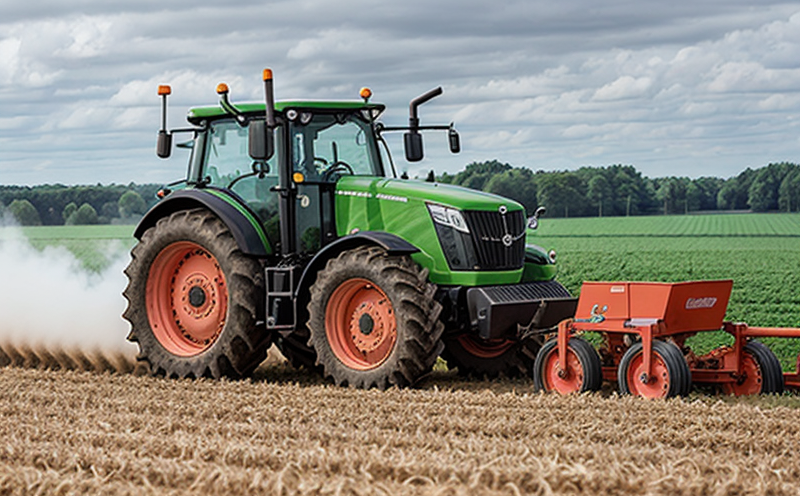Grain Dryer Energy Consumption Testing
In agriculture and forestry testing, ensuring that machinery operates efficiently is crucial not only for productivity but also for environmental sustainability. Among agricultural machinery, grain dryers play a pivotal role in maintaining the quality of harvested crops by drying them to optimal moisture levels before storage or further processing. One key aspect of this efficiency is energy consumption; it directly impacts operational costs and environmental impact.
Energy consumption testing for grain dryers involves evaluating how much electricity or other forms of energy are required during various stages of operation to achieve desired drying outcomes. This test helps in identifying areas where improvements can be made, ensuring that the dryer runs at peak efficiency without compromising on quality.
The testing process typically starts with detailed planning and preparation by our team of experts who understand the intricacies of agricultural machinery. We ensure that all dryers brought to us are in good working condition before starting any tests. This includes checking belts, fans, control systems, and other components that could affect energy usage.
Once the dryer is ready for testing, we begin by setting up a controlled environment where we can monitor its performance accurately. We use advanced meters capable of measuring real-time power consumption throughout each cycle. These cycles are designed to replicate actual field conditions as closely as possible so that our results reflect realistic operating scenarios.
To ensure accuracy and reliability, multiple runs are conducted under different load levels and ambient temperature conditions. This helps us gather comprehensive data which can then be analyzed thoroughly. From this analysis, we generate detailed reports outlining areas of improvement needed based on current practices versus best practice recommendations aligned with international standards such as ISO 8004.
For quality managers looking to reduce operational costs while maintaining high standards in grain drying processes, understanding energy efficiency becomes increasingly important. By leveraging our expertise in this area, they gain valuable insights into how small changes can lead to significant savings over time. Compliance officers benefit from having robust data that supports regulatory requirements related to energy use within their operations.
R&D engineers working on developing new models or enhancing existing ones find these tests particularly useful as they provide quantitative measures against which prototypes can be compared. Procurement teams gain assurance knowing that the equipment purchased meets not only performance criteria but also sustainability goals set by organizations like ISO 14001.
Applied Standards
In conducting grain dryer energy consumption testing, our laboratory adheres strictly to international standards such as ISO 8004 - Energy Performance of Industrial Machines. These guidelines ensure that all tests are conducted uniformly across different facilities worldwide. Compliance with these standards guarantees accurate comparisons between various dryers and facilitates better decision-making processes within organizations.
Scope and Methodology
The scope includes evaluating the energy consumption throughout each cycle of the grain dryer under controlled environmental conditions. Specific parameters measured include kilowatt-hours (kWh) consumed per hour, overall efficiency percentage compared to theoretical maximums, and identification of any inefficiencies in current settings.
- Real-time monitoring of electrical usage during different phases
- Comparative analysis against manufacturer specifications
- Identification of potential improvements through detailed reports
- Evaluation based on international standards ensuring accuracy and reliability
The methodology involves setting up a controlled environment to simulate typical operational scenarios. This setup allows for precise measurement without external variables affecting results. Data collected is analyzed using specialized software that provides visual representations and numerical data points.
Benefits
- Cost Reduction: Identifying inefficiencies leads to lower electricity bills over time.
- Improved Efficiency: Optimized settings enhance drying capabilities while maintaining quality standards.
- Sustainability Goals: Meeting environmental targets by reducing energy consumption aligns with global sustainability initiatives.
- Better Decision Making: Accurate data informs strategic decisions regarding equipment upgrades or replacements.
- Compliance Assurance: Ensures adherence to regulatory requirements related to energy use within agricultural operations.
By incorporating these benefits into your maintenance plans, you not only enhance operational efficiency but also contribute positively towards sustainability efforts in the broader community.





